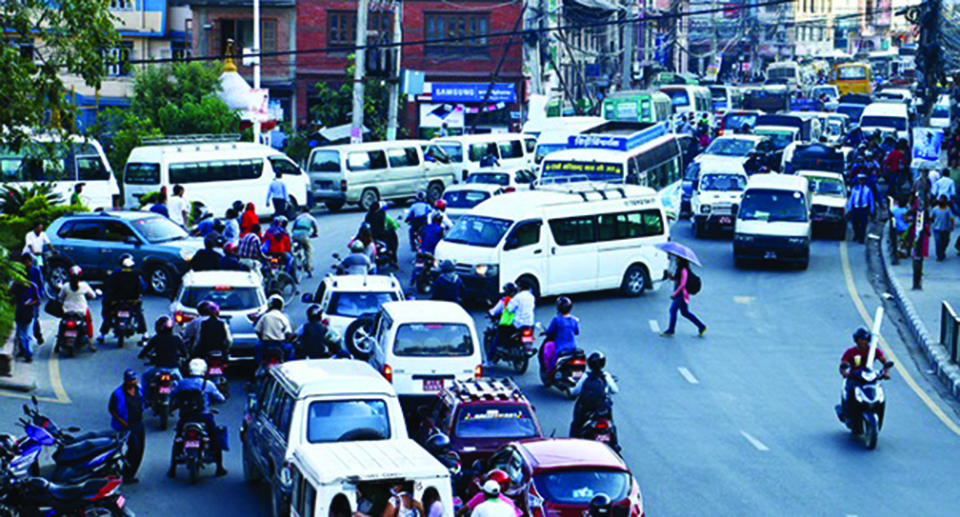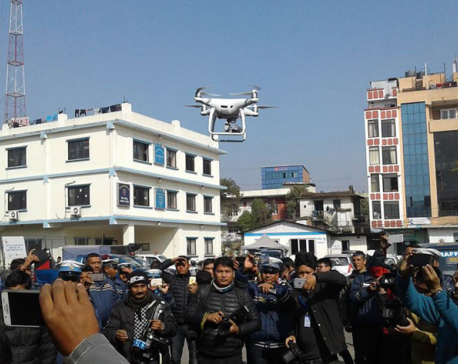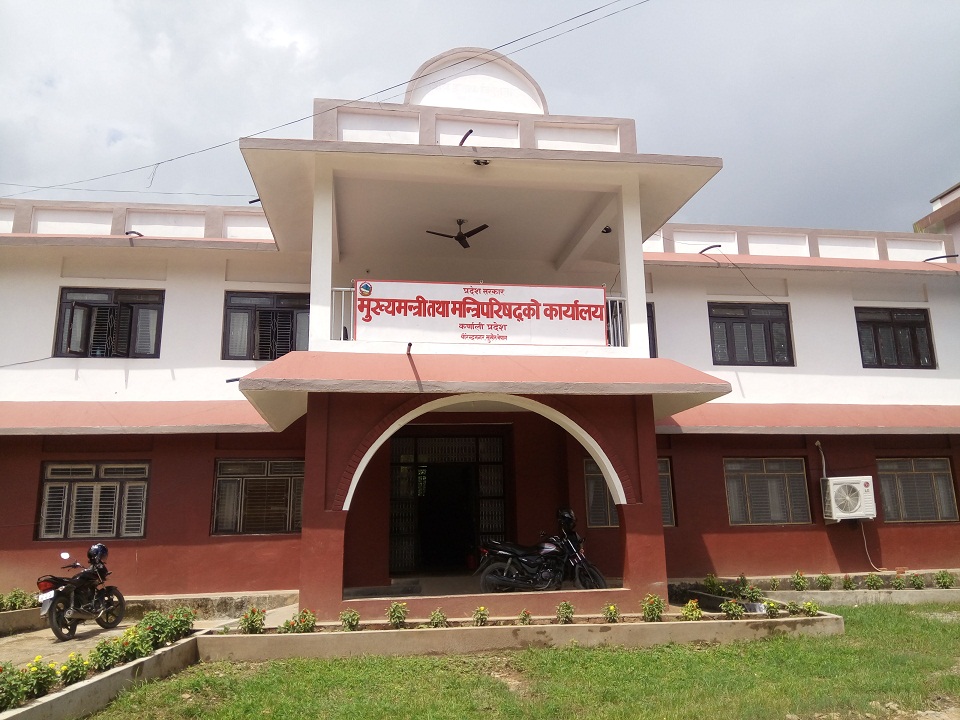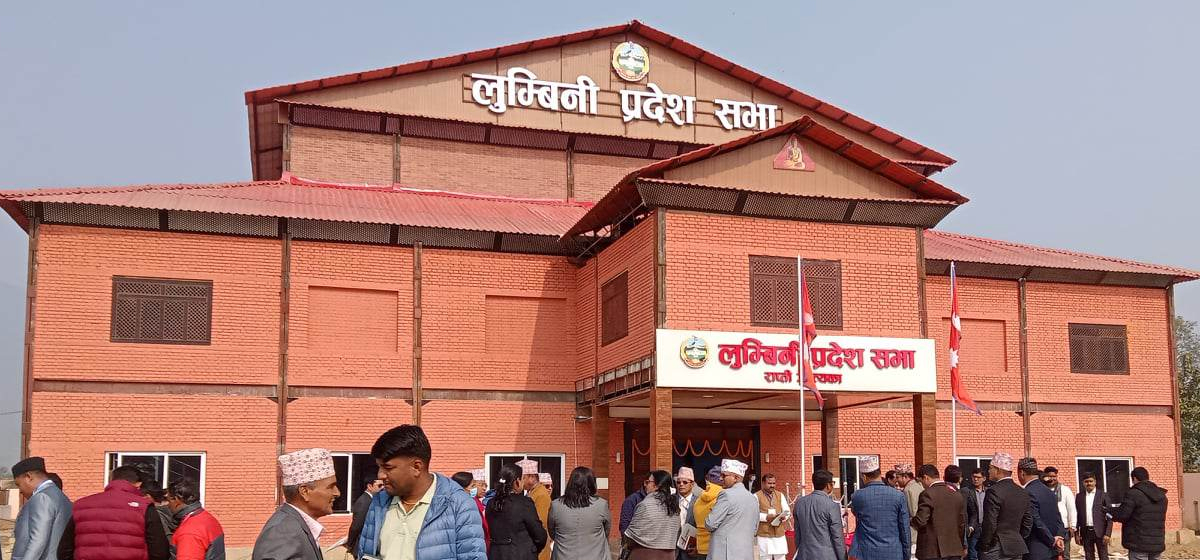
OR

If much-hyped slogan of “prosperous Nepal” is to be realized, Nepal needs to start gathering real-time data and implement the smart city initiatives
According to the report of McKinsey Global Institute, over the past three decades, the world’s urban population has been rising by an average of 65 million people per year. By 2050, cities are projected to add another 2.5 billion people, with nearly 90 percent of the increase concentrated in Asia and Africa. Increased city population requires additional road network. Vehicles plying over these networks emit pollution and cascades deleterious effects on residents’ physical health and their life qualities, and raises the question on the long-term sustainability of any city. As high-income people add more and more vehicles to ply over the dilapidated roads, people begin their every workday fuming in congested traffic. The low-income residents are experiencing the most grueling commutes, because living in urban periphery without any means of affordable transportation compels them to spend most of their productive times and incomes in commuting.
As urban traffic gets to a crawl, it not only increases commuting time but also adds unprecedented amount of gaseous pollution. Studies show that increasing commuting time has a strong correlation with anxiety, poor fitness, obesity, high blood pressure, and other physical maladies among the urban dwellers. Thus urban planners must find a sustainable solution to increasing traffic jams by using innovative technology.
International experience
Millions of people in cities like Jakarta (Indonesia), Rio (Brazil), Bangkok (Thailand), Manila (The Philippines), Mexico City (Mexico), Bogota (Colombia), Kolkata, Bangalore, and New Delhi (India), Nairobi (Kenya), Seoul (South Korea), and Atlanta (US) have been able to cut commuting times by 15–20 percent on average by using innovative techniques within the rubric of smart city initiatives. They have utilized even the private cars as Uber by connecting the car and driver using apps that provide services to needy people. In these cities, police uses real-time data, utilizes statistical analysis to predict and highlight patterns of human behaviors and uses smart surveillance to reduce commuting times. By using the smart city initiatives, crime prone cities such as Rio de Janeiro, Cape Town, Mexico City, and Chicago have been able to reduce crime rates by 30-35 percent.
The majority of these cities have at least piloted smart surveillance, real-time crime mapping, and outfitting police officers with body-worn cameras. Many places have started adding new roles such as chief digital officer or establishing cross-disciplinary smart city units. Boston, for example, has established an analytics unit, while Chicago has built a data science team. The Rio de Janeiro initiated projects to integrate data from more than 30 municipalities and state agencies under one roof, with hundreds of screens monitoring transportation, water, energy, security, and other key operations.
The rise in traffic congestions not only increases commuting time, but also the vehicular emission becomes serious public health threats. According to the same report, air pollution in Africa has increased by 36 percent from 1990 to 2013 mainly coming from old vehicular emissions. The nitrogen dioxide, which is a byproduct of burning fuel, adds particulate matters such as dust and soot into the air increasing the amount of PM10 particles (2.5- 10 micrometers in size) and PM2.5 particulates (less than 2.5 micrometers). Coarse particulate comes from sources such as road dust and construction, while fine particulate comes primarily from vehicles’ combustion. The latter is particularly dangerous as it contains heavy lead particles in the air. The PM2.5 particulates easily penetrate deeply into the lungs.
Suffering cities
Nepali cities suffer from both coarse and fine particulates, and many respiratory and skin diseases have been on the rise. The fine dust particles emerging from muddy soils deposited by rain waters mix up with lead coming from the emission of vehicles. The combinations of gaseous emission, course materials and dust particles make Kathmandu one of the most polluted cities in Asia. In many global mega urban areas, smart city initiatives have helped to reduce PM2.5 concentrations by some 3–6 percent. Cities in India and China have recently experienced episodes of choking smog and muddy rainfalls. It is because air pollution hangs over cities and mixes up with rain. These particulates are responsible for more than three million premature deaths globally per annum.
Discussion in Nepal is centered on monorail, cable car, metro rail and underground rail while metropolitan areas like Kathmandu have had the most complex and unmanageable ecosystem. Metro-rail has become expensive from its sustainability prospective even in developed countries like the US and Great Britain. How will it flourish in Kathmandu, where detailed research on its long-term viability is yet to come for public debates? Major overhauling for urban spatial re-organization with vehicular accesses, to every house to rescue people if in case of natural calamities will be very difficult.
In many countries, the average commute times have been shortened by over five percent by using transportation apps and intelligent syncing of traffic signals. However, collecting and analyzing data on public transit usage and traffic is time consuming and expensive process. China took four years to establish systems to gather real time data for over 500 cities across the country. In 2013, EU’s one of the major agendas was the creation of smart cities all over Europe and spent over €77 billion to establish a system for real-time data collection.
India announced plans to create 100 smart cities along the Chennai-Mumbai—Delhi—Kolkata corridor. The US Department of Transportation launched a smart city challenge in 2015, encouraging cities across the country to submit innovative plans. Thousands of traffic surveillance cameras, drones, facial and voice recognition technology (machine learning), road detectors, smart city light, smart closed-circuit television, smart traffic lights, and traffic monitors are established to monitor ongoing activities in smart cities.
Way ahead for Nepal
While developed countries can use these high techs, within Nepal, if traffic congestions are reduced through transformation of digital technology, many commuters from urban areas will largely benefit. Nepali politicians especially the actors of urban-based revolution have made Nepali cities unaffordable for low-income people. Living in Kathmandu is as expensive as in New York, California and Tokyo. If much-hyped slogan of “prosperous Nepal” is to be realized, Nepal needs to start gathering real-time data and implement the smart city initiatives.
Resources are constrained in Nepal. Thus utilizing existing research educational institutions such as the Central Department of Geography (CDG), Engineering and Computer Science units of Tribhuvan University, Kathmandu University and other educational institutions could be an option. Data gathered from these units can be brought into the Geographic Information Systems (GIS) and remote sensing platforms to examine the topological relationships of various ecosystems.
As Nepal aspires to create many consolidated settlements in various geographic regions, it will be best if the plans start with the proper analysis of spatial organizations of neighborhoods so as not to create another messy and unlivable Kathmandu. Nepal has no option other than fixing the problems it has and starting with digital smart city initiatives for its prosperity.
The author, Professor of Geography at the University of Central Missouri, is currently Fulbright Specialist at Tribhuvan University’s Central Department of Geography
You May Like This

Traffic police seek installation of traffic lights in Pokhara
POKHARA, July 9: District Police Office (DPO), Kaski has urged the government to support installing traffic lights in Pokhara for... Read More...

Traffic disruption will be minimal during Modi's visit: Traffic police
KATHMANDU, May 11: Nepal Police is well prepared for the traffic management during the two-day state visit of Indian Prime Minister... Read More...

Traffic police to use drone camera to monitor Kathmandu's traffic
KATHMANDU, Jan 13: The Metropolitan Traffic Police Division (MTPD) is bringing a drone camera into use for effective traffic management... Read More...

Just In
- Karnali CM Kandel secures vote of confidence
- National Youth Scientists Conference to be organized in Surkhet
- Rautahat traders call for extended night market hours amid summer heat
- Resignation of JSP minister rejected in Lumbini province
- Russia warns NATO nuclear facilities in Poland could become military target
- 16th Five Year Plan: Govt unveils 40 goals for prosperity (with full list)
- SC hearing on fake Bhutanese refugees case involving ex-deputy PM Rayamajhi today
- Clash erupts between police and agitating locals in Dhanusha, nine tear gas shells fired



















Leave A Comment